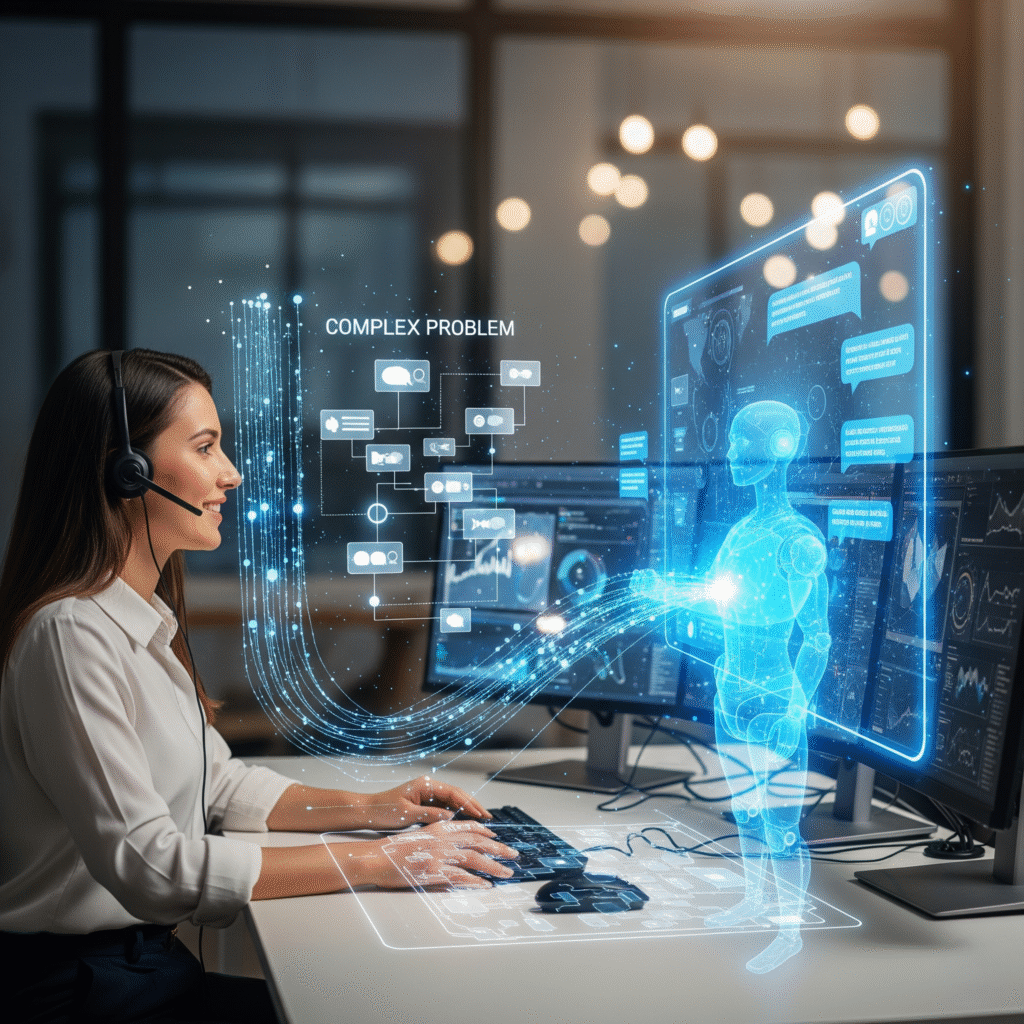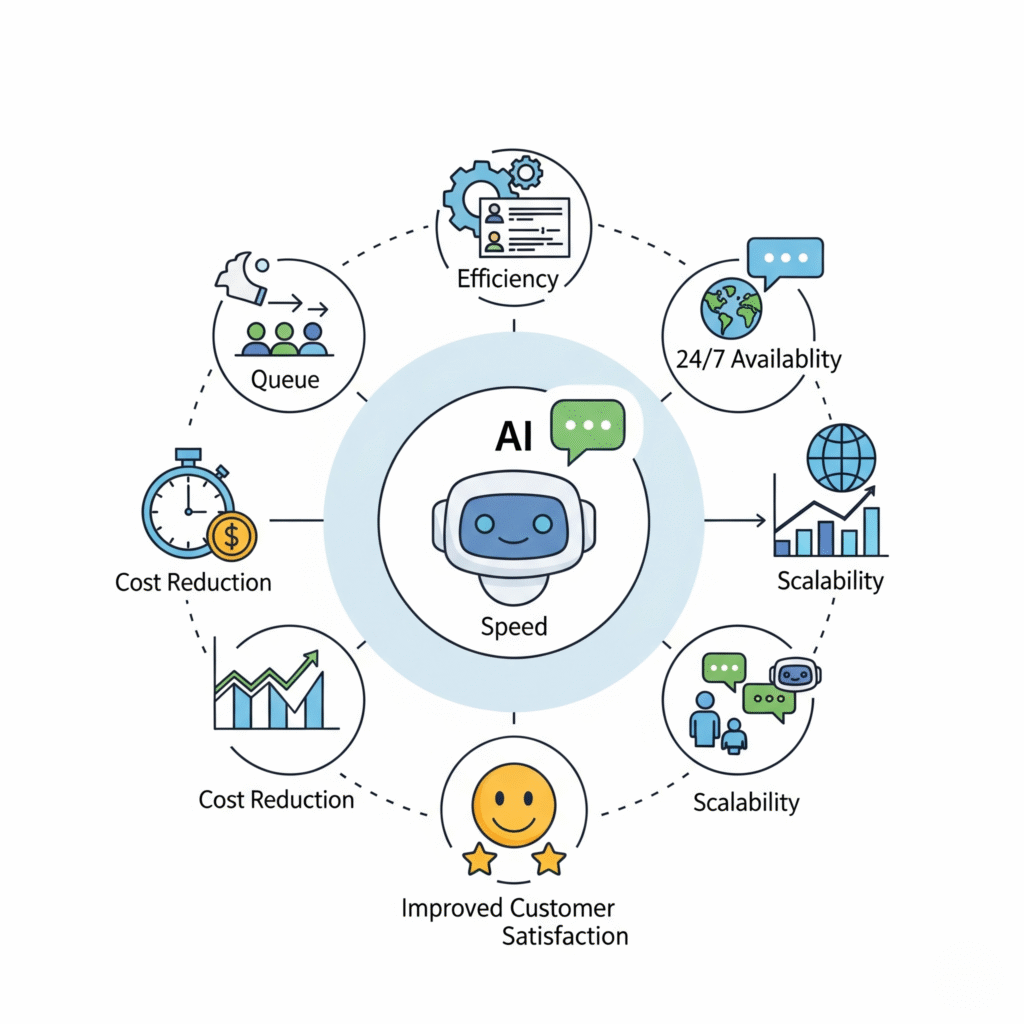AI-Powered Chatbots for Customer Service: Transforming Customer Support in 2025
In today’s fast-paced business world, customer expectations are higher than ever. They demand instant answers, 24/7 availability, and personalized support. Meeting these demands manually can be expensive and time-consuming. That’s why more companies are turning to AI-powered chatbots for customer service—a technology revolutionizing how brands interact with customers.
By leveraging artificial intelligence (AI) and natural language processing (NLP), these smart bots can handle thousands of queries simultaneously, resolve common issues instantly, and even mimic human-like conversations. In 2025, they are no longer just an optional add-on—they are a must-have for any competitive business.
AI-Powered Chatbots for Customer Service
Why Businesses Are Adopting Chatbots in 2025

AI-Powered Chatbots for Customer Service
What Are AI-Powered Chatbots?
An AI-powered chatbot is a virtual assistant that uses AI, machine learning (ML), and NLP to interact with customers in a natural, conversational manner. Unlike traditional rule-based bots that only respond to pre-set commands, AI chatbots understand intent, learn from interactions, and adapt over time.
They can:
- Answer FAQs in real-time
- Guide customers through purchases
- Resolve complaints and issues
- Provide personalized product recommendations
- Escalate complex problems to human agents
This technology works across websites, mobile apps, and messaging platforms like WhatsApp, Facebook Messenger, and Instagram, ensuring seamless customer engagement.
Why Businesses Are Adopting Chatbots in 2025
The adoption rate of AI-powered chatbots for customer service has skyrocketed in recent years. According to Gartner, 80% of customer interactions will be handled by AI by the end of 2025.
Key reasons businesses are embracing this technology include:
- Cost Savings: Reduce hiring costs by automating repetitive tasks.
- Speed: Provide instant responses without wait times.
- Scalability: Handle thousands of queries at once without additional staff.
- 24/7 Availability: Serve customers across different time zones effortlessly.
In a competitive market, speed + personalization is the winning formula, and chatbots deliver both.

AI-Powered Chatbots for Customer Service
Key Benefits of AI-Powered Chatbots for Customer Service
Here’s why these bots are game-changers:
1. Instant Support, Anytime
Customers no longer need to wait for office hours. Chatbots provide round-the-clock assistance, ensuring no query is left unanswered.
2. Personalized Interactions
AI-powered bots use customer history and preferences to deliver tailored responses and product suggestions.
3. Reduced Human Workload
By handling repetitive inquiries, chatbots free up human agents to focus on complex, high-value tasks.
4. Cost-Effective Operations
Instead of expanding call centers, businesses can deploy scalable chatbots at a fraction of the cost.
5. Data-Driven Insights
Chatbots collect and analyze conversation data, helping businesses understand customer behavior and improve services.
Real-Life Examples of Chatbots in Action
- E-commerce: Brands like Amazon and Zalando use chatbots to assist in product searches, returns, and order tracking.
- Banking: Banks such as HSBC use bots to check balances, transfer funds, and provide fraud alerts.
- Healthcare: Medical chatbots like Buoy Health help patients identify symptoms and book appointments.
- Travel: Companies like Booking.com use chatbots to handle reservations and travel itinerary updates.
How to Implement AI Chatbots in Your Business
Here’s a step-by-step guide:
- Identify Use Cases – Start with the most common customer queries.
- Choose the Right Platform – Options include Drift, Intercom, ManyChat, and custom-built solutions.
- Integrate with CRM – Connect chatbots to your CRM for a unified customer experience.
- Train the Bot – Use past chat data to improve accuracy.
- Test Before Launch – Run simulations to ensure smooth conversations.
- Monitor & Improve – Continuously refine the bot using customer feedback.

Common Mistakes to Avoid When Using Chatbots
- Over-relying on automation: Some complex issues still need human agents.
- Poor conversation design: Confusing responses can frustrate customers.
- Ignoring updates: AI models need regular training to remain effective.
- Not offering a human handoff: Always give users the option to talk to a real person.
Future Trends for AI in Customer Support
In 2025 and beyond, AI-powered chatbots will become even more advanced. Expect:
- Voice-activated support via smart speakers
- Multilingual AI bots breaking language barriers
- Emotion recognition to adapt responses based on customer mood
- Integration with AR/VR for immersive support experiences
The businesses that adopt these advancements early will have a significant competitive edge.
Final Thoughts
AI-powered chatbots for customer service are no longer futuristic—they’re the present reality. They save time, cut costs, and enhance customer satisfaction while giving companies a competitive advantage.
In 2025, ignoring this technology could mean losing customers to competitors who are more responsive, available, and efficient. Whether you’re a startup or a global brand, investing in an AI chatbot is one of the smartest moves you can make for your business.
Checkout our latest blog content👇
CRM vs Marketing Automation: Key Differences & How to Choose in 2025


Pingback: Marketing Technology (MarTech): Complete Guide to Tools, Trends & Strategy in 2025